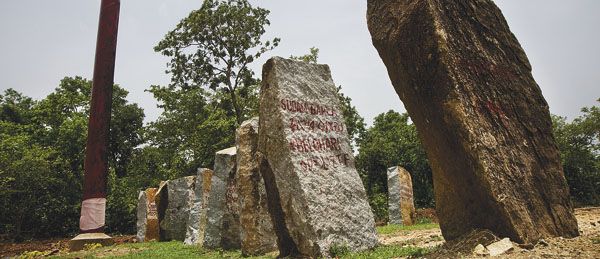
The Year that Was: State of Unrest
Tribals in the state want to fence their mineral-rich earth from invading metal companies. Both sides need an open mind if this stalemate is to be broken
What will you gain from knowing about the struggle?” asks Rabindra Jarika, a 31-year-old farmer. Jarika is a youth leader of the Ho tribe from Chandiya village in the mineral-rich state of Orissa. He now spends most of his time leading a protest against a steel plant that threatens to displace his tribe and their traditional way of life.
Chandiya flanks the industrial hub of Kalinganagar and is one of the six villages that are holding out against Tata Steel’s plans to set up a Rs. 30,000-crore plant.

WRITING ON THE WALL: A memorial erected by local tribals for people killed in police firing in 2006 in Kalinagar
Kalinganagar is not alone. There is Kalahandi and Dhinkia. Tribals living in these parts find, much to their consternation, that their fertile land has vast reserves of iron ore and bauxite. Companies want to mine them. The Orissa government wants the economic activity spurred by these projects. But invariably, it would mean the tribals would lose their land, livelihood and culture.
The outcome of this three-way joust will decide the fate of investment worth Rs. 3 lakh crore from companies such as Tata Steel, South Korean steel giant Posco and metals major Vedanta.
(This story appears in the 30 November, -0001 issue of Forbes India. To visit our Archives, click here.)




